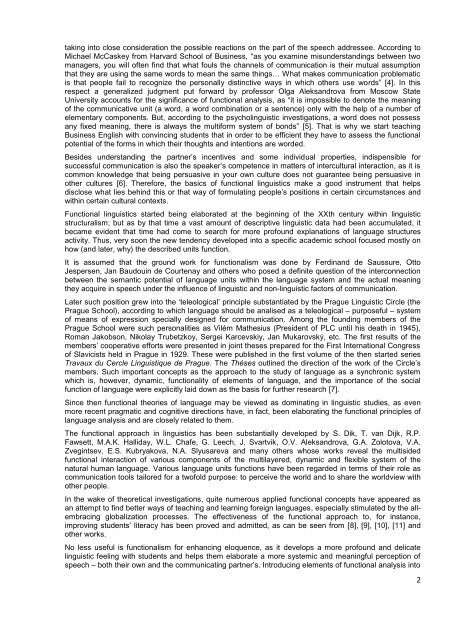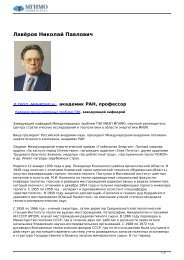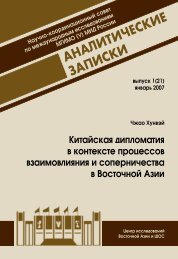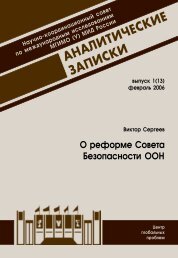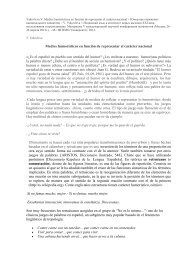BUSINESS ENGLISH AND FUNCTIONAL LINGUISTICS ...
BUSINESS ENGLISH AND FUNCTIONAL LINGUISTICS ...
BUSINESS ENGLISH AND FUNCTIONAL LINGUISTICS ...
You also want an ePaper? Increase the reach of your titles
YUMPU automatically turns print PDFs into web optimized ePapers that Google loves.
taking into close consideration the possible reactions on the part of the speech addressee. According to<br />
Michael McCaskey from Harvard School of Business, “as you examine misunderstandings between two<br />
managers, you will often find that what fouls the channels of communication is their mutual assumption<br />
that they are using the same words to mean the same things… What makes communication problematic<br />
is that people fail to recognize the personally distinctive ways in which others use words” [4]. In this<br />
respect a generalized judgment put forward by professor Olga Aleksandrova from Moscow State<br />
University accounts for the significance of functional analysis, as “it is impossible to denote the meaning<br />
of the communicative unit (a word, a word combination or a sentence) only with the help of a number of<br />
elementary components. But, according to the psycholinguistic investigations, a word does not possess<br />
any fixed meaning, there is always the multiform system of bonds” [5]. That is why we start teaching<br />
Business English with convincing students that in order to be efficient they have to assess the functional<br />
potential of the forms in which their thoughts and intentions are worded.<br />
Besides understanding the partner’s incentives and some individual properties, indispensible for<br />
successful communication is also the speaker’s competence in matters of intercultural interaction, as it is<br />
common knowledge that being persuasive in your own culture does not guarantee being persuasive in<br />
other cultures [6]. Therefore, the basics of functional linguistics make a good instrument that helps<br />
disclose what lies behind this or that way of formulating people’s positions in certain circumstances and<br />
within certain cultural contexts.<br />
Functional linguistics started being elaborated at the beginning of the XXth century within linguistic<br />
structuralism; but as by that time a vast amount of descriptive linguistic data had been accumulated, it<br />
became evident that time had come to search for more profound explanations of language structures<br />
activity. Thus, very soon the new tendency developed into a specific academic school focused mostly on<br />
how (and later, why) the described units function.<br />
It is assumed that the ground work for functionalism was done by Ferdinand de Saussure, Otto<br />
Jespersen, Jan Baudouin de Courtenay and others who posed a definite question of the interconnection<br />
between the semantic potential of language units within the language system and the actual meaning<br />
they acquire in speech under the influence of linguistic and non-linguistic factors of communication.<br />
Later such position grew into the ‘teleological’ principle substantiated by the Prague Linguistic Circle (the<br />
Prague School), according to which language should be analised as a teleological – purposeful – system<br />
of means of expression specially designed for communication. Among the founding members of the<br />
Prague School were such personalities as Vilém Mathesius (President of PLC until his death in 1945),<br />
Roman Jakobson, Nikolay Trubetzkoy, Sergei Karcevskiy, Jan Mukarovský, etc. The first results of the<br />
members’ cooperative efforts were presented in joint theses prepared for the First International Congress<br />
of Slavicists held in Prague in 1929. These were published in the first volume of the then started series<br />
Travaux du Cercle Linguistique de Prague. The Théses outlined the direction of the work of the Circle’s<br />
members. Such important concepts as the approach to the study of language as a synchronic system<br />
which is, however, dynamic, functionality of elements of language, and the importance of the social<br />
function of language were explicitly laid down as the basis for further research [7].<br />
Since then functional theories of language may be viewed as dominating in linguistic studies, as even<br />
more recent pragmatic and cognitive directions have, in fact, been elaborating the functional principles of<br />
language analysis and are closely related to them.<br />
The functional approach in linguistics has been substantially developed by S. Dik, T. van Dijk, R.P.<br />
Fawsett, M.A.K. Halliday, W.L. Chafe, G. Leech, J. Svartvik, O.V. Aleksandrova, G.A. Zolotova, V.A.<br />
Zvegintsev, E.S. Kubryakova, N.A. Slyusareva and many others whose works reveal the multisided<br />
functional interaction of various components of the multilayered, dynamic and flexible system of the<br />
natural human language. Various language units functions have been regarded in terms of their role as<br />
communication tools tailored for a twofold purpose: to perceive the world and to share the worldview with<br />
other people.<br />
In the wake of theoretical investigations, quite numerous applied functional concepts have appeared as<br />
an attempt to find better ways of teaching and learning foreign languages, especially stimulated by the allembracing<br />
globalization processes. The effectiveness of the functional approach to, for instance,<br />
improving students’ literacy has been proved and admitted, as can be seen from [8], [9], [10], [11] and<br />
other works.<br />
No less useful is functionalism for enhancing eloquence, as it develops a more profound and delicate<br />
linguistic feeling with students and helps them elaborate a more systemic and meaningful perception of<br />
speech – both their own and the communicating partner’s. Introducing elements of functional analysis into<br />
2


